St. Elmo’s Fire – Ancient Plasma Phenomenon That Frightened Sailors
Conny Waters - AncientPages.com - St. Elmo's Fire is a fascinating atmospheric phenomenon that has been observed by sailors for centuries. This natural occurrence is characterized by a bright blue or violet glow that appears to surround ships during certain weather conditions. The phenomenon was first documented by Pliny the Elder in the 1st century A.D., who described blue flames appearing during thunderstorms.
The name "St. Elmo's Fire" is derived from St. Erasmus, also known as St. Ermo, the patron saint of Mediterranean sailors. Over time, "St. Ermo" was mispronounced as "St. Elmo," leading to the current name of the phenomenon.
Throughout history, many notable figures, including Christopher Columbus, Ferdinand Magellan, and Julius Caesar, have reported witnessing St. Elmo's Fire during their voyages. Sailors traditionally viewed this luminous display as a good omen and a sign that their prayers had been answered.
St. Elmo's Fire typically appears towards the end of severe storms. Sailors observed that soon after the glow manifested, the turbulent seas would calm, and the storm would subside. This association led to the belief that the phenomenon was a harbinger of improved weather conditions.
Ancient Greeks named St. Elmo's fire based on its appearance. A single discharge was called "Helene" (Greek for "torch"). Two simultaneous occurrences were named "Castor and Pollux" after Helen's mythological twin brothers. This naming reflects the cultural importance of the phenomenon in ancient Greek society.
St. Elmo's fire, was sometimes associated with the Devil among sailors. In 1707, Pierre Taillandier, a missionary appointed to India, embarked on a lengthy journey that involved crossing the Atlantic Ocean, traversing Mexico, and sailing across the Pacific via the Philippines to reach Pondicherry on India's Coromandel Coast.
During his voyage, Taillandier experienced an incident in the Malacca Strait approximately two years after departing France. He, along with his companion Pierre Bonnet and about a hundred other passengers, were aboard a two-masted vessel, likely an Arabian dhow. They narrowly escaped a shipwreck off the coast of North Sumatra during a severe storm that persisted for several days.
Taillandier provided a vivid description of the experience, detailing how the ship momentarily seemed to defy gravity as it lost contact with the water's surface before descending into the troughs between enormous wave crests, which he likened to mountains.
"The sea was very agitated; the waves were high and quick to break over our heads. They kept menacing us with the specter of death. One alone would have been enough to entomb us."
"But their prayers were answered even as the devil himself, the vessel's frightened crew believed, put up a fight by showing itself as points of St. Elmo Fire, off the dhow'swhose sails were made of rush and bamboo cross-battens." 1
The scientific explanation for St. Elmo's Fire involves electrical discharge in the atmosphere, often occurring during thunderstorms or in strong electric fields. While once shrouded in mystery and superstition, this natural light show continues to captivate observers with its ethereal beauty and historical significance.
An electrical discharge characterizes St. Elmo's Fire. This occurrence results from a voltage difference between the atmosphere and the sea, causing ionization of gases around masts, emitting a visible glow. While similar to lightning, St. Elmo's Fire is distinct and is actually a form of plasma, comparable to the illumination in neon lightbulbs.
It's important to note that St. Elmo's Fire and "ball lightning" are separate phenomena. While the scientific community debates the nature of ball lightning, it is definitively not the same as St. Elmo's Fire. A key difference is that ball lightning can move through the air, whereas St. Elmo's Fire remains stationary.
Despite its name, St. Elmo's Fire is not actually fire. Additionally, it's a misconception that this phenomenon only occurs at sea. Observations of St. Elmo's Fire have been reported on various structures and objects, including church steeples, airplane wing tips, and even cattle horns.
This electrical display results from specific atmospheric conditions and can occur in various locations with a sufficient charge differential. Understanding the nature and characteristics of St. Elmo's Fire helps distinguish it from other atmospheric electrical phenomena and dispels common misconceptions about its occurrence and properties.
Written by Conny Waters – AncientPages.com Staff Writer
Copyright © AncientPages.com All rights reserved. This material may not be published, broadcast, rewritten or redistributed in whole or part without the express written permission of AncientPages.com
More From Ancient Pages
-
 How Did Norman Conquest Of 1066 Affect Everyday People’s Eating Habits?
Archaeology | Jul 7, 2020
How Did Norman Conquest Of 1066 Affect Everyday People’s Eating Habits?
Archaeology | Jul 7, 2020 -
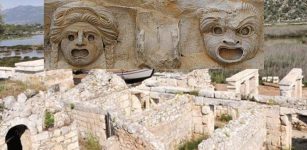 Ancient City Was Discovered Underground In Antalya’s Demre District
Archaeology | Nov 26, 2019
Ancient City Was Discovered Underground In Antalya’s Demre District
Archaeology | Nov 26, 2019 -
 3,500-Year-Old Stone Inscribed With A Curse Against The City’s Governor Discovered In Jerusalem
Archaeology | Jul 13, 2022
3,500-Year-Old Stone Inscribed With A Curse Against The City’s Governor Discovered In Jerusalem
Archaeology | Jul 13, 2022 -
 Nanna: Mesopotamian Moon God, Lord Of Wisdom And Father Of The Gods
Featured Stories | Apr 1, 2017
Nanna: Mesopotamian Moon God, Lord Of Wisdom And Father Of The Gods
Featured Stories | Apr 1, 2017 -
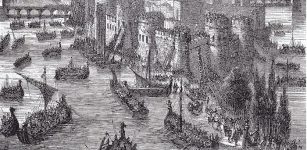 On This Day In History: ‘Sea King’ Ragnar Lodbrok Seizes Paris – On March 28, 845
News | Mar 28, 2017
On This Day In History: ‘Sea King’ Ragnar Lodbrok Seizes Paris – On March 28, 845
News | Mar 28, 2017 -
 Ancient Secrets Of Rare Maps Of Judah Ben Zara Revealed
Artifacts | Sep 20, 2022
Ancient Secrets Of Rare Maps Of Judah Ben Zara Revealed
Artifacts | Sep 20, 2022 -
 Pyrgi Gold Tablets: A Rare Ancient Bilingual Treasure
Artifacts | Nov 23, 2018
Pyrgi Gold Tablets: A Rare Ancient Bilingual Treasure
Artifacts | Nov 23, 2018 -
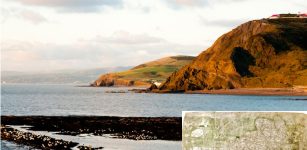 Map May Confirm The Legend Of The Mysterious Lost Sunken Welsh Kingdom Of Cantre’r Gwaelod In The Black Book Of Carmarthen
Archaeology | Aug 21, 2022
Map May Confirm The Legend Of The Mysterious Lost Sunken Welsh Kingdom Of Cantre’r Gwaelod In The Black Book Of Carmarthen
Archaeology | Aug 21, 2022 -
 Unusual Archaeological Finds On Small Pacific Islands May Provide Evidence Of Intriguing Mythical Beings
Featured Stories | Oct 24, 2024
Unusual Archaeological Finds On Small Pacific Islands May Provide Evidence Of Intriguing Mythical Beings
Featured Stories | Oct 24, 2024 -
 ‘Empty’ Egyptian Coffin Kept In Museum Contained A 2,500-Year-Old Mummy
Archaeology | Mar 31, 2018
‘Empty’ Egyptian Coffin Kept In Museum Contained A 2,500-Year-Old Mummy
Archaeology | Mar 31, 2018 -
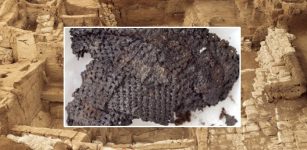 This Is One Of The Oldest Pieces Of Cloth In The World And It’s Made Of Bast Fibers!
Featured Stories | Aug 26, 2023
This Is One Of The Oldest Pieces Of Cloth In The World And It’s Made Of Bast Fibers!
Featured Stories | Aug 26, 2023 -
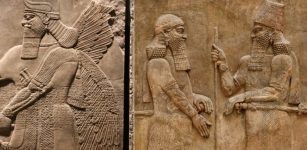 Treasure Trove Of Assyrian Kings Found In Tunnels Excavated And Plundered By Terrorists
Archaeology | Apr 20, 2020
Treasure Trove Of Assyrian Kings Found In Tunnels Excavated And Plundered By Terrorists
Archaeology | Apr 20, 2020 -
 Secrets Of The Spiral Symbol Left By Ancient Civilizations
Ancient Symbols | Mar 11, 2016
Secrets Of The Spiral Symbol Left By Ancient Civilizations
Ancient Symbols | Mar 11, 2016 -
 Evidence Of Unusual Solar Activity Discovered On Ancient Cuneiform Tablets
Archaeology | Oct 16, 2019
Evidence Of Unusual Solar Activity Discovered On Ancient Cuneiform Tablets
Archaeology | Oct 16, 2019 -
 On This Day In History: Taoist Monk Discovers Dunhuang Manuscripts In Mogao Caves, China – On June 25, 1900
News | Jun 25, 2016
On This Day In History: Taoist Monk Discovers Dunhuang Manuscripts In Mogao Caves, China – On June 25, 1900
News | Jun 25, 2016 -
 Why Was Alexander A Great Military Genius?
Ancient History Facts | Oct 23, 2018
Why Was Alexander A Great Military Genius?
Ancient History Facts | Oct 23, 2018 -
 Ritual Bath In Herod’s Fortress Found In Ruins Of Machaerus, East Of Jordan River
Archaeology | Jun 16, 2017
Ritual Bath In Herod’s Fortress Found In Ruins Of Machaerus, East Of Jordan River
Archaeology | Jun 16, 2017 -
 Luna Settlement: First Multi-Year European Settlement Identified In Pensacola, Florida
Archaeology | Dec 26, 2015
Luna Settlement: First Multi-Year European Settlement Identified In Pensacola, Florida
Archaeology | Dec 26, 2015 -
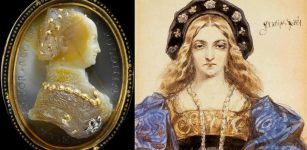 Bona Sforza – Ambitious Queen Of Poland Was Betrayed And Murdered
Featured Stories | Jan 21, 2019
Bona Sforza – Ambitious Queen Of Poland Was Betrayed And Murdered
Featured Stories | Jan 21, 2019 -
 Medieval Wooden Stave Churches In Norway Are Older Than Previously Believed
Archaeology | Nov 8, 2019
Medieval Wooden Stave Churches In Norway Are Older Than Previously Believed
Archaeology | Nov 8, 2019

